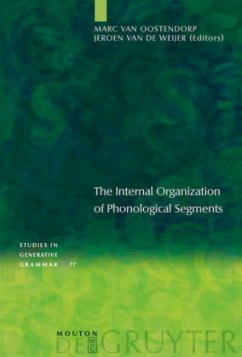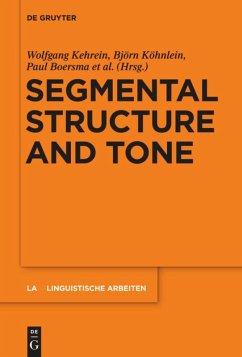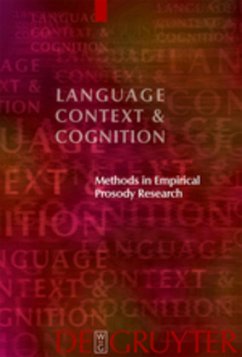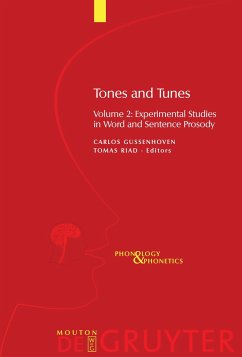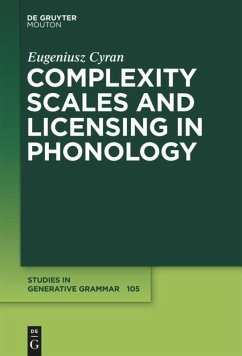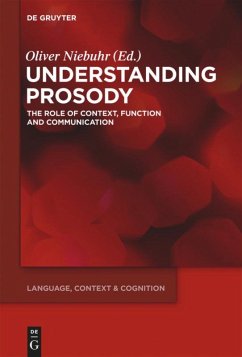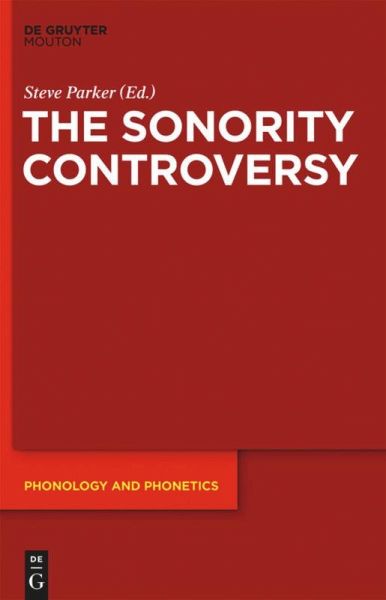
The Sonority Controversy
Versandkostenfrei!
Versandfertig in 1-2 Wochen
119,99 €
inkl. MwSt.

PAYBACK Punkte
60 °P sammeln!
Sonority has a long and contentious history. It has often been invoked by linguists as an explanatory principle underlying various cross-linguistic phonotactic generalizations, especially within the domain of the syllable. However, many phonologists and phoneticians have expressed concerns about the adequacy of formal accounts based on sonority, including even doubts about the very existence of sonority itself.To date, the topic of sonority has never been the focus of an entire book. Consequently, this is the first complete volume that explores diverging viewpoints about phonological phenomena...
Sonority has a long and contentious history. It has often been invoked by linguists as an explanatory principle underlying various cross-linguistic phonotactic generalizations, especially within the domain of the syllable. However, many phonologists and phoneticians have expressed concerns about the adequacy of formal accounts based on sonority, including even doubts about the very existence of sonority itself.
To date, the topic of sonority has never been the focus of an entire book. Consequently, this is the first complete volume that explores diverging viewpoints about phonological phenomena rooted in sonority taken from numerous languages. All of the contributors are well-known and respected linguists who publish their research in leading academic outlets. Furthermore, each chapter in this collection contains new, cutting-edge results based on the latest trends in the field. Hence, no other extant piece of literature matches this volume in terms of its breadth andcoverage of issues, all converging on the common theme of sonority.
Given the wide variety of subtopics in this collection, there is something to appeal to everyone - the list of contributions encompasses areas such as Optimality Theory, acquisition, computational modeling, acoustic phonetics, typology, syllable structure, speech perception, markedness, connectionism, psycholinguistics, and even MRI technology. What ties all of these issues together is a solid and consistent emphasis on sonority as a unified background phenomenon. Furthermore, a continuum of opinions about sonority is represented, ranging from complete acceptance and enthusiasm, on the one hand, to moderate skepticism on the other hand.
To date, the topic of sonority has never been the focus of an entire book. Consequently, this is the first complete volume that explores diverging viewpoints about phonological phenomena rooted in sonority taken from numerous languages. All of the contributors are well-known and respected linguists who publish their research in leading academic outlets. Furthermore, each chapter in this collection contains new, cutting-edge results based on the latest trends in the field. Hence, no other extant piece of literature matches this volume in terms of its breadth andcoverage of issues, all converging on the common theme of sonority.
Given the wide variety of subtopics in this collection, there is something to appeal to everyone - the list of contributions encompasses areas such as Optimality Theory, acquisition, computational modeling, acoustic phonetics, typology, syllable structure, speech perception, markedness, connectionism, psycholinguistics, and even MRI technology. What ties all of these issues together is a solid and consistent emphasis on sonority as a unified background phenomenon. Furthermore, a continuum of opinions about sonority is represented, ranging from complete acceptance and enthusiasm, on the one hand, to moderate skepticism on the other hand.



